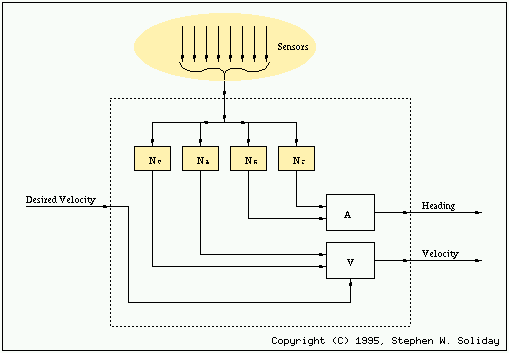
Figure 13.4: Edge-Following Subsystem

Return to the Overall Diagram, Priority Decision
In addition to goal-seeking, it is necessary for the vehicle to negotiate around obstacles. This is not the same behavior as described in the section describing proximity detection. The collision avoidance system repels the vehicle away from edges. The edge following system actually attracts the vehicle to the edge, or more precisely to a parallel line, a predetermined distance from the obstacle boundary. This edge-following behavior is very important in the negotiation of deep obstacle.
Edge following is based on the Braitenburg networks(1). Two such networks act together to provide a desired velocity and a desired heading that may then be communicated to the torque controller. The purpose of the networks is to react to the sensor inputs and to provide a vector of scale values. These scale values are used to determine the desired state of the vehicle.
Braitenburg networks are differentiated by their small number of neurons. These networks are not the massively interconnected networks such as the BPN. The neurons in these networks are small linear functions. The weights tend to act more as stimulatory and inhibitory connections such as in the perceptron.
This module is part of a robotics simulation that was demonstrated in a Master's Thesis entitled: